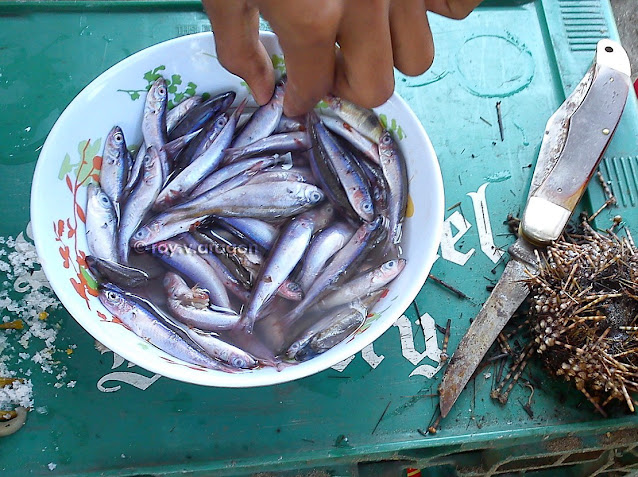This is fresh and raw fish prepared as a "salad" or kilawen. This particular fish is called talibukno (variably identified scientifically as Leiognathus ruconius, Gazza minuta, and others) and fished from Claveria, Cagayan, best as a kilawen at this size of growth, small ones and bite size so you can consume all of it, head and intestines, bones--perfect for a kilawen nga ikan just like that of the munamon/taburkit, or padas, or tirong.
A bounty fresh from the sea:
A kilogram of talibukno for the kilawen:
The preparation. Ginger and onions are a must. And salt, of course.
And a freshly squeezed calamansi juice as a souring agent with a zing (vinegar not recommended):
Mince them finely and mix:
And here it is. It invites you yo bring out your drinks as this is best for pulotan: What's missing here is, of course, sili ti sairo to make this a sure spicy hot kilawen.
Enjoy!
Follow also Ilokano Food @ Instagram and subscribe to Ilokano Food YoutTube channel for more photos, videos, and stories about Ilokano food, cooking, cuisine, and culture.
~~~~~































































